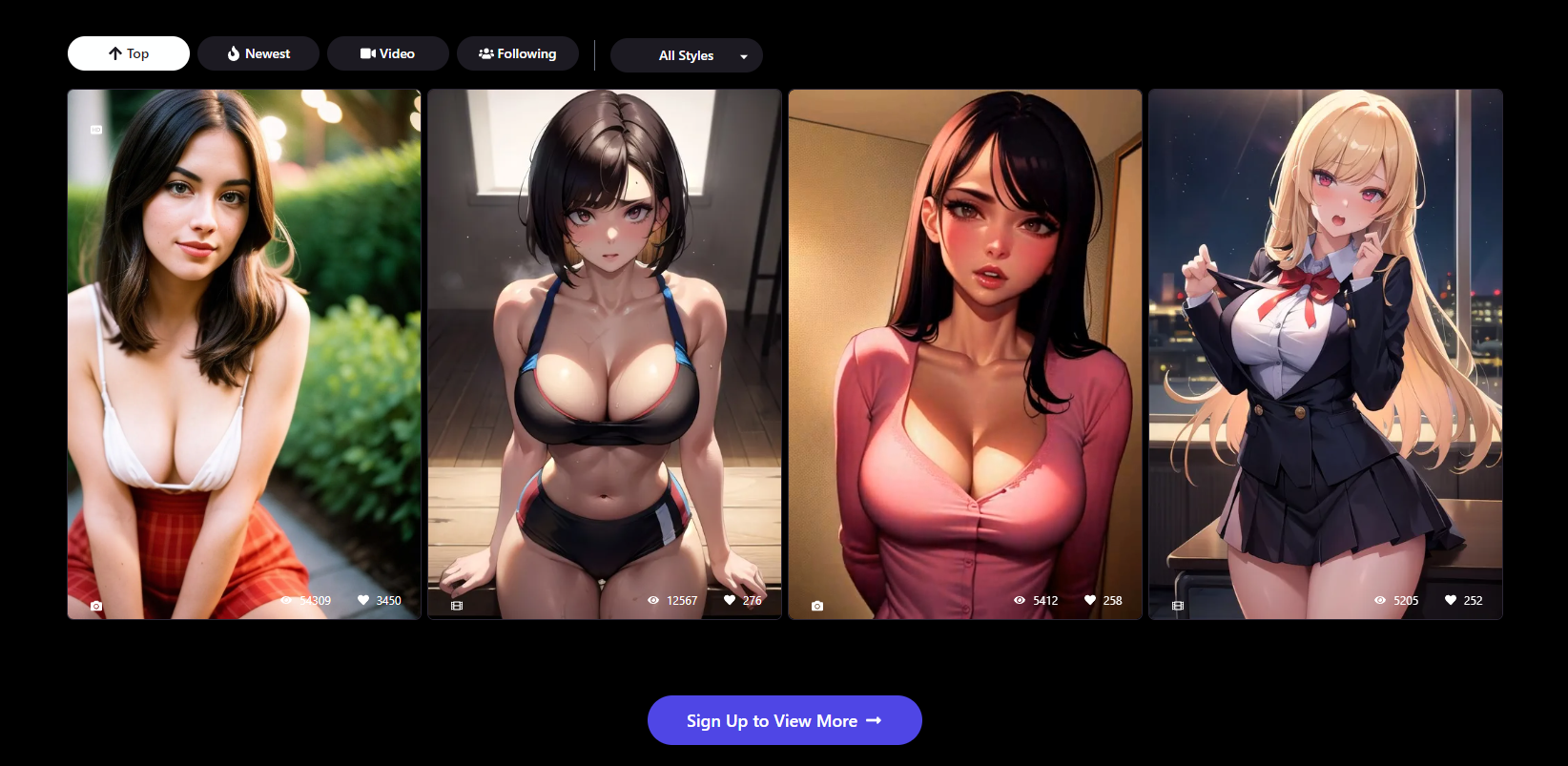From Taboo to Trendy: Embracing Ai Cameltoe in Fashion and Entertainment
It is no longer a taboo to talk about or showcase Ai cameltoe in the world of fashion and entertainment. With advancements in technology, designers and entertainers are embracing this trend as a way to push boundaries and challenge societal norms.
This once controversial topic is now being utilized as an edgy and daring statement that adds a touch of uniqueness to designs and performances. As society becomes more open-minded, Ai cameltoe is emerging as a trendy element in the ever-evolving world of fashion and entertainment.
The Controversy Behind AI Cameltoe
Cameltoe, the visible outline of a woman’s labia majora in tight-fitting clothing, has long been a taboo subject in fashion and entertainment. Women have been shamed for revealing too much or not conforming to society’s narrow standards of beauty. However, with the rise of artificial intelligence (AI) technology, cameltoe is no longer seen as just a wardrobe malfunction or a body flaw – it has become a trend. Now, with the rise of technology and the increasing acceptance of the LGBTQ+ community, bi dating apps have become a convenient and popular way for bisexual individuals to connect with like-minded people.
In recent years, we have seen the emergence of AI-generated images and models that challenge traditional beauty standards and embrace diversity. From virtual influencers like Lil Miquela to digital fashion shows featuring computer-generated designs, AI has opened up new possibilities for creativity and self-expression. And now, this technology is breaking barriers by embracing something that was once deemed shameful: cameltoe.
So how did AI cameltoe become trendy? What are the implications for the fashion and entertainment industries? And what does this mean for women and their bodies? Let’s delve deeper into this controversial topic.
A Look at Candy.ai
Candy.ai is an AI-powered platform that creates hyper-realistic 3D renderings of human bodies. It uses advanced algorithms to generate realistic skin textures, movements, and even sweat. The creators behind Candy.ai saw an opportunity to break away from traditional beauty standards in the fashion industry and celebrate diversity through their technology.
Pros:
- Allows for more creativity and experimentation in fashion design.
- Creates diverse and inclusive representations of the female body.
- Challenges unrealistic beauty standards perpetuated by traditional models.
- Promotes body acceptance and positivity.
Cons:
- May perpetuate objectification of women’s bodies.
- Could lead to further pressure on women to conform to an idealized AI-generated body type.

The Seductive Power of Seduced.ai
Seduced.ai is another AI platform that has caused a stir in the fashion and entertainment industries. It creates virtual models with hyper-sexualized features, including exaggerated curves and prominent cameltoe. While this may seem like a step backward for female representation, it has actually opened up a conversation about reclaiming sexuality and embracing all forms of beauty.
Pros:
- Challenges traditional notions of beauty by celebrating overtly sexualized features.
- Allows for more diverse representations of femininity and sensuality.
- Promotes body positivity through its use of non-traditional model bodies.
- Opens up dialogue about societal attitudes towards female sexuality.
Cons:
- Risks further objectifying and fetishizing specific body types.
- May perpetuate harmful stereotypes about women’s bodies being solely objects of desire.

The Role of PromptChan in Normalizing Cameltoe in Fashion
PromptChan is an AI-driven chatbot that helps users generate clothing designs based on their preferences. One interesting feature of PromptChan is that it offers options for cameltoe-friendly designs. This means that the clothes will have a tighter fit and emphasize the shape of the wearer’s genitalia.
For many years, tight-fitting clothing has been associated with shame and embarrassment due to the potential visibility of cameltoe. But with PromptChan’s inclusion of this option, wearing such clothing can now be seen as desirable rather than something to be hidden or ashamed of.
Pros:
- Narrows the gap between fantasy and reality in fashion design by allowing users to see how clothes would look on them before purchasing.
- Normalizes the idea of cameltoe and encourages women to embrace their bodies in form-fitting clothing.
- Promotes body positivity by offering a variety of options for all body types, including those with visible genitalia outlines.
- Encourages self-expression and creativity through fashion choices.
Cons:
- Risks fetishizing specific body parts and perpetuating unrealistic beauty standards.
- Could lead to pressure on women to conform to certain body shapes or features deemed desirable by AI technology.
The Potential Impact on Society
The rise of AI cameltoe in fashion and entertainment has sparked debates about its impact on society. On one hand, it can be seen as a step towards normalizing and celebrating diverse representations of the female body. It challenges traditional beauty standards that have long been imposed on women and encourages them to embrace their bodies without shame.
However, there are concerns about the objectification and sexualization of women’s bodies through this trend. The use of AI-generated models also raises questions about representation and diversity – are these digital creations truly representative of real women?
There is a fear that this trend could further blur the lines between fantasy and reality in terms of societal expectations for women’s bodies. With virtual influencers like Lil Miquela already blurring these lines, the normalization of AI cameltoe may contribute to an unattainable standard of perfection for young girls growing up in a world where social media plays such a significant role.
The Role of Consent
One aspect that cannot be overlooked when discussing AI cameltoe is consent. With computer-generated images and models being used in place of real people, it begs the question: do they have agency over how their bodies are portrayed? While some argue that since they are not real, they cannot give consent, others believe that creators still have a responsibility to uphold ethical standards and respect for the human body. Once you visit the mesmerizing world of AI Nude Girls, you will be captivated by their lifelike appearance and realistic movements.
In an age where deepfake technology can create seemingly real videos of people without their consent, it is crucial to consider the implications of AI-generated images and models. And as this trend continues to gain popularity, there needs to be a conversation about the use of these technologies and how they impact our understanding of consent in the digital age.
Final Thoughts
AI cameltoe has gone from being a taboo subject to a trendy and controversial topic in fashion and entertainment. It challenges traditional notions of beauty, promotes diversity and self-expression, but also raises concerns about objectification and unrealistic beauty standards. As we continue down this path of technological advancement, it is essential to critically examine the impact of these advancements on society and ensure that ethical standards are upheld. It is up to us as consumers to support brands and platforms that promote inclusivity, diversity, and respect for all bodies – both real and AI-generated.

Candy.ai
✔️ Generate AI Porn Images
✔️ Listen To Voice Messages
✔️ Fast Response Time

Seduced.ai
✔️ Generate AI Models
✔️ Save & Reuse Girls
✔️ 300 Images Per Month

PromptChan.ai
✔️ Completely Free To Test
✔️ Edit Your AI Models
✔️ Make Porn Images (no limit)
What Exactly is an Ai Cameltoe and How Does It Relate to Artificial Intelligence?
An ai cameltoe is a term used to describe the subtle outline or bulge of a woman’s genitalia in tight clothing, created by an artificial intelligence program. It relates to AI as it shows how advanced technology can mimic and even enhance human features, blurring the line between reality and simulation.
Are There Any Specific Industries Or Applications Where Ai Cameltoe Technology is Being Used?
Currently, AI cameltoe technology is primarily being used in the fashion and clothing industry. It can be used to analyze customer preferences and provide more accurate sizing recommendations for clothing. However, there has been some controversy surrounding its use in objectifying women’s bodies for marketing purposes.
How Does the Use of Ai Cameltoe Impact Data Privacy and Ethical Concerns?
The use of ai cameltoe, or artificial intelligence technology that simulates human-like genitalia, raises concerns about data privacy and ethics. This technology collects and analyzes sensitive personal data, potentially compromising an individual’s privacy. It also raises questions about the ethical implications of creating realistic virtual representations of human bodies, including objectification and perpetuation of unrealistic beauty standards. Proper regulation and transparency are necessary to address these concerns.
